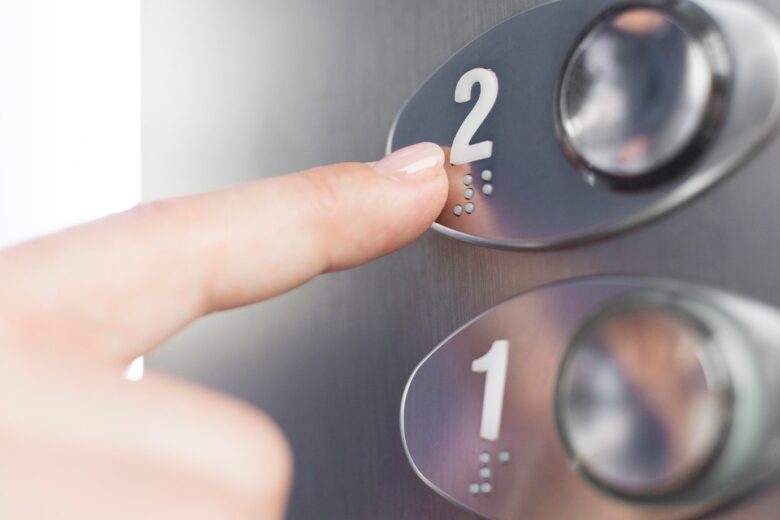Contents
Introduction
As the trend for vertical living continues to expand in the UAE, the demand for home lifts and escalators has seen a significant increase. Once considered a luxury item only accessible to elite living spaces, the humble lift has lately become an arguable necessity. Today, more and more developers and home-owners are looking to adopt the convenience afforded by these machines. Indeed, as apartment buildings continue to soar ever higher, lifts and escalators have emerged as important mobility aids for the elderly, families, and disabled folk alike.
But their use doesn’t stop there! In the bustling urban centers of the UAE, where high-rise residences are the norm, having a lift or an escalator at home offers ease of access to members of the public as well. Whether you’re moving heavy items or skipping the exertion provided by climbing the stairs, installing a lift at home may be the right choice for you!
In this guide, we’ll explore the benefits of installing lifts and escalators at home, as well as key considerations to take for choosing and maintaining your device. So, without further ado, come with us as we take the first step towards elevating your living experience!
The Benefits of Home Lifts

Source: freepik.com
Installing a lift at home is a great idea for households that want to bring convenience and ease-of-access to their residence. Say goodbye to struggling with heavy groceries or pieces of furniture—with a home elevator, all it takes it is one easy press of a button to take you from one floor to another. We promise your back will thank you!
Safety and Independence for the Elderly or Disabled
For many Emiratis, it is a norm of family life for several generations to live under one roof. Multi-generational living is a cherished tradition in the UAE, and continues to be a key aspect of family life even for immigrants from the Middle East, India, and several other cultures. The benefits of such arrangements, of course, are numerous. Family members count on each other for emotional support, share responsibilities, and are better able to pass on and preserve traditions. However, living with multiple generations under one roof can pose its own challenges, particularly when it comes to ensuring the safety and independence of the elderly or disabled.
Part of designing a home that adequately accommodates various generations may be considering the installation of a home lift or esclator. For elderly or disabled members of the family, these may offer a crucial lifeline to not only their safety and independence, but also to make them feel like a fully integrated member of the family. While stairs often pose serious risks in the form of potential accidents, lifts and escalators provide a secure means for elderly or disabled loved ones to access all areas of their home.
Increased Property Value
Beyond this, home lifts have also been shown to significantly increase your home’s property value! Many modern home buyers are attracted to the mix of luxury and practicality that a home lift provides. With such great returns on your investment, the decision to install a lift or escalator in your home becomes more and more of an obvious no-brainer each day!
Understanding Escalators in Residential Settings

Source: freepik.com
For home-owners or developers entertaining the idea of installing a home lift or escalator, here are a few key things to consider:
- Space and Design Considerations: Depending on the way your home is set up, either a lift or escalator will be the better choice for you. Escalators typically require more horizontal space than lifts, and are therefore better suited to large homes or multi-level residences with open floor plans.
- Safety Features: When considering the installation of any mobility aids in your home, safety is always king! After all, nobody wants to put their vulnerable children or elderly family members in danger in their own home! While shopping for residential escalators, look out for soft start and stop mechanisms that prevent sudden jolts, handrails that move in sync with the steps, and anti-slip surfaces to keep vulnerable loved ones safe from accidents!
- Maintenance: If you’re serious about installing a home escalator or lift, make sure to budget in the cost of the machine’s regular maintenance. This includes routine inspections that check for everyday wear and tear, proper lubrication of moving parts, and a once-over check up that ensures all safety mechanisms are working as they should.
Choosing the Right Home Elevator
Now that you’ve decided a home elevator really is the right choice for you, it’s time to consider what type of elevator to buy. While pneumatic vacuum elevators provide a sleek, futuristic look that is sure to up your home’s value, traction elevators are an excellent option for those looking to cut costs with something energy-efficient. Meanwhile, platform lifts are the obvious choice for families looking for wheelchair accessibility. The choice, ultimately, is yours.
Factors to Consider When Selecting an Elevator
When choosing an elevator, it’s important to consider:
- the space you have available for your elevator,
- the minimum weight capacity of your lift to ensure it meets your household’s needs, and
- how the lift’s design and finish complement your home’s overall décor.
Additionally, never skimp on essential safety features like emergency lowering mechanisms or battery backups. Purchasing a lift that’s been certified as energy efficient may also be a wise choice, as this can reduce your long-term costs of operation and minimize your environmental impact.
The Importance of Professional Installation
Last but not least, the importance of professional installation cannot be overstated. A qualified installer will make sure your elevator is safely and correctly fitted, adhering to all necessary building codes and regulations.
Maintenance and Upkeep

Source: freepik.com
You have now successfully installed a home mobility device! Congratulations! But the story doesn’t quite end there. As the proud owner of a new home lift or elevator, it’s important to stay on top of your machine’s maintenance to ensure its safe operation.
Some tips on maintaining your device include:
- Scheduling periodic inspections to check all mechanical components, such as cables, pulleys, and motors,
- Lubricating moving parts to minimise friction and wear,
- Routine cleanings to prevent dust or debris buildup, and
- Testing your emergency systems to make sure they’re functional in case of an emergency.
In the case of complex issues like electrical malfunctions or hydraulic failures, however, it’s important to get in touch with a professional technician. Do not attempt any major repairs on your own, as this can be dangerous and might void your warranty!
Conclusion
We end this article by repeating the great value and improvement installing lifts and escalators into your home can make for your quality of life. In this guide, we went over the various types of devices available on the market, highlighting their individual benefits and modes of installation or upkeep. In the end, choosing the right solution for your family depends on your specific needs.
We hope this article helped you learn how installing a home elevator can transform your living experience, offering an exciting touch of luxury to the everyday and mundane!
